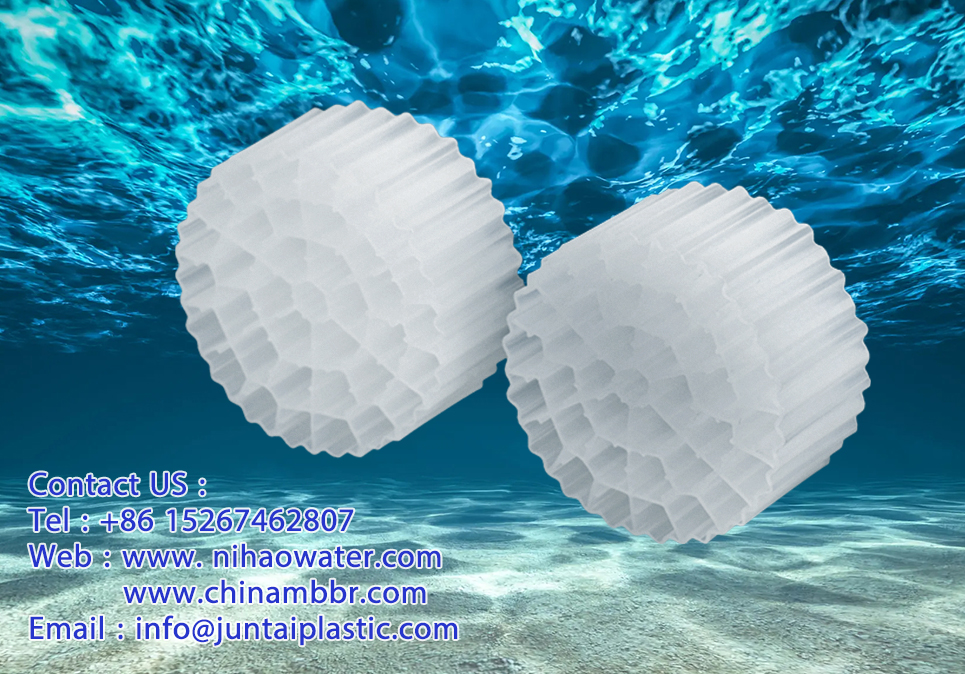 +86-15267462807
+86-15267462807
MBBR (Moving Bed Biofilm Reactor) and traditional treatment methods are two different approaches to wastewater treatment.
Key differences and advantages of MBBR media over traditional treatment methods.
Traditional Treatment Methods: Traditional wastewater treatment methods typically involve processes such as activated sludge, trickling filters, and anaerobic digestion. These methods rely on the use of suspended growth processes, where microorganisms are suspended in the wastewater to break down organic matter.
Established Technology: Traditional treatment methods have been widely used for many years and are well-established in the wastewater treatment industry.
Effective Removal: These methods can effectively remove organic matter, nutrients, and pathogens from wastewater when operated correctly.
Flexible Design: Traditional treatment processes can be designed and tailored to meet specific treatment goals and effluent quality requirements.
Large Footprint: Traditional treatment methods often require large land areas due to the construction of settling tanks, aeration basins, and clarifiers.
High Energy Consumption: Energy-intensive equipment, such as blowers and pumps, is required to maintain the suspended growth processes, resulting in high energy consumption.
Sensitivity to Shock Loads: Traditional treatment methods are more sensitive to variations in influent characteristics and can be disrupted by sudden changes in flow or load.
MBBR (Moving Bed Biofilm Reactor) Media: MBBR is a relatively newer technology in wastewater treatment. It utilizes suspended biofilm carriers or media that provide a surface for the attachment and growth of microorganisms, forming a biofilm.
Increased Treatment Capacity: MBBR systems have a higher biomass concentration compared to traditional methods, allowing for increased treatment capacity within a smaller footprint.
Process Stability: The biofilm attached to the media provides a more stable environment for the microorganisms, making the process less susceptible to shock loads and fluctuations in wastewater characteristics.
Enhanced Nutrient Removal: Nihao MBBR media can support a diverse microbial community, allowing for improved removal of organic matter, nitrogen, and phosphorus.
Retrofitting Capability: MBBR media can be easily integrated into existing wastewater treatment plants, providing an upgrade or expansion option without significant infrastructure changes.
Media Clogging: The MBBR media can potentially become clogged over time, requiring periodic maintenance and cleaning to maintain performance.
Media Loss: In some cases, MBBR media may experience loss due to hydraulic forces or cleaning procedures, requiring periodic replacement.
Case Study: MBBR Media for Industrial Wastewater Treatment Location: XYZ Industrial Complex
Description: XYZ Industrial Complex was facing challenges in treating their complex and high-strength industrial wastewater. Traditional treatment methods were struggling to meet discharge limits and required extensive operational and maintenance efforts. To overcome these challenges, they implemented an MBBR system with specialized media designed for industrial applications.
Results:
Significantly improved treatment efficiency, achieving desired effluent quality within regulatory limits.
Enhanced tolerance to fluctuating influent characteristics, allowing for consistent performance.
Reduced sludge production and associated disposal costs.
Lower operational and maintenance requirements compared to the previous treatment method.
Overall cost savings and increased system reliability.
Case Study: MBBR Media in Small-Scale Municipal Wastewater Treatment Location: ABC Town
Description: ABC Town had limited space and budget for wastewater treatment infrastructure. The existing activated sludge system was struggling to cope with population growth and stricter effluent standards. To address these challenges, they decided to retrofit the existing system with MBBR media.
Results:
Improved treatment efficiency and increased nutrient removal capacity.
Reduced footprint due to the higher treatment capacity of the MBBR system.
Flexibility to handle variations in influent flow and load.
Lower energy consumption and operational costs compared to the previous activated sludge system.
Smooth transition and minimal disruption during the retrofitting process.
Case Study: MBBR Media for decentralized wastewater treatment Location: Rural Community
Description: A rural community with scattered households sought an efficient and cost-effective solution for decentralized wastewater treatment. Traditional septic systems were causing groundwater contamination and health hazards. MBBR technology with compact and robust media was implemented as a decentralized treatment solution.
Results:
Improved treatment efficiency, achieving high-quality effluent suitable for reuse or safe discharge.
Easy installation and maintenance of the compact MBBR system in individual households.
Reduced environmental impact and groundwater contamination risks.
Enhanced sustainability through the potential for resource recovery and reuse.
Positive community response and improved overall sanitation conditions.